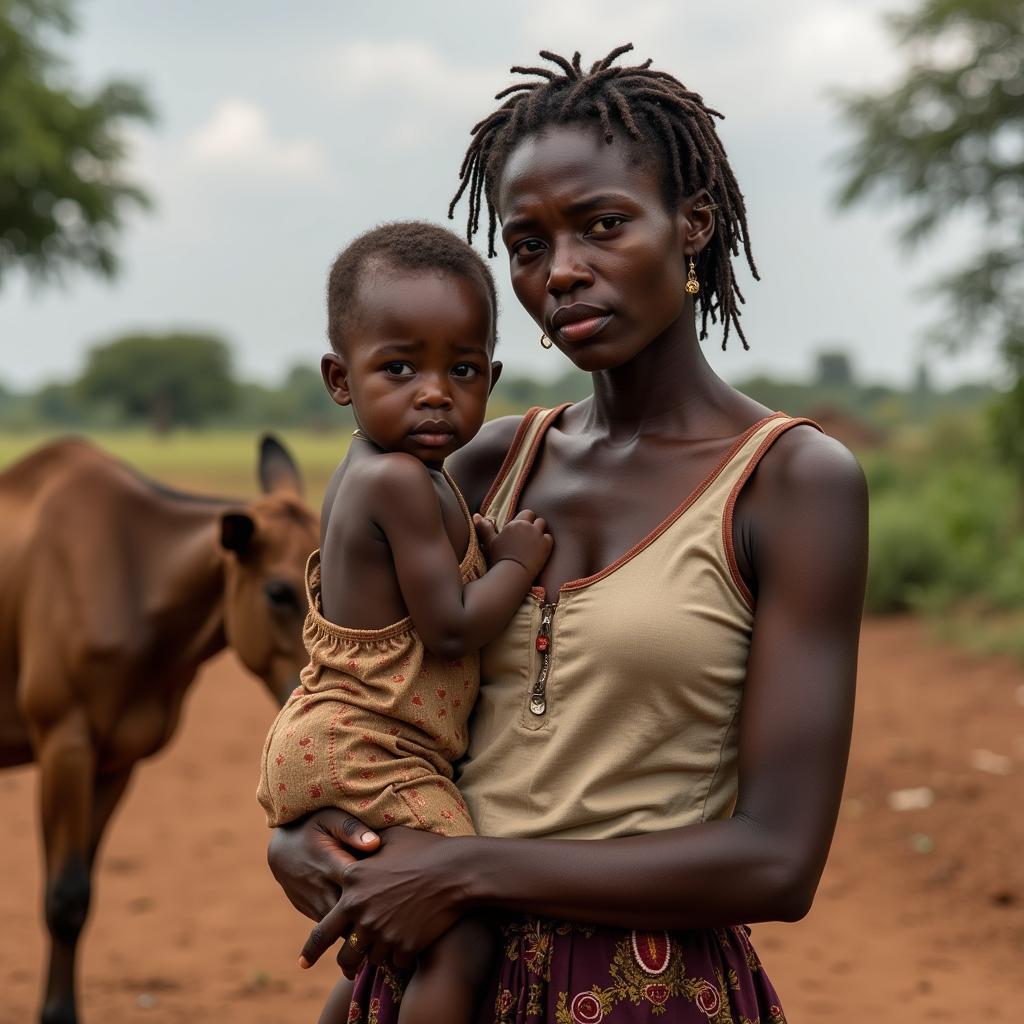Exploring the African Countries in the Great Rift Valley
The Great Rift Valley is a geological wonder spanning thousands of kilometers across the African continent. This article delves into the fascinating landscapes, diverse cultures, and unique wildlife found in the African countries nestled within this remarkable rift. We’ll explore the geological significance of the valley and how it has shaped the flora, fauna, and human societies that call it home. You can find out more about adventures on the continent by exploring some African Adventures.
A Geological Marvel: Understanding the Great Rift Valley
The Great Rift Valley is a series of contiguous geographic trenches approximately 7,000 kilometres (4,300 mi) in length, that runs from northern Syria in Southwest Asia to central Mozambique in Southeast Africa. It’s a testament to the powerful forces shaping our planet, a slow and dramatic splitting of the African tectonic plate. This ongoing geological process has created a dramatic landscape of volcanoes, lakes, and escarpments, fostering unique ecosystems and influencing human settlement patterns. The valley is home to some of the oldest hominid fossils ever discovered, providing valuable insights into human evolution.
African Countries Shaped by the Rift
Several African countries are located within or bordered by the Great Rift Valley. These include Ethiopia, Kenya, Tanzania, Uganda, Rwanda, Burundi, Democratic Republic of Congo, Malawi, Zambia, and Mozambique. Each nation offers a unique perspective on the valley’s impact, from the stunning volcanic landscapes of Ethiopia to the abundant wildlife in Kenya’s Maasai Mara. The rift has influenced not just the physical geography, but also the cultural tapestry of these nations. For instance, the fertile volcanic soils have allowed for agriculture to thrive, shaping the livelihoods and traditions of many communities. There’s a story about how the African continent break happened.
Wildlife Havens within the Rift
The Great Rift Valley is a biodiversity hotspot, teeming with a rich variety of wildlife. The diverse habitats, ranging from savannas and grasslands to forests and wetlands, support an incredible array of species. Iconic animals like lions, elephants, giraffes, and zebras roam the plains, while numerous bird species soar above. The lakes within the rift, such as Lake Tanganyika and Lake Malawi, are home to an astonishing diversity of fish. These unique ecosystems face increasing pressure from human activities, highlighting the need for conservation efforts.
Human Impact and Conservation Challenges
While the Great Rift Valley has been a cradle of human evolution and a source of sustenance for millennia, the increasing human population and activities pose significant challenges. Deforestation, agriculture expansion, and infrastructure development threaten the delicate balance of the ecosystems. Conservation efforts are crucial to preserve the valley’s unique biodiversity and cultural heritage. Many organizations and local communities are working to protect the valley’s natural resources and promote sustainable development. You can explore the African continent map with names to gain a deeper understanding of this beautiful continent.
Experiencing the Great Rift Valley
The Great Rift Valley offers unforgettable travel experiences, from thrilling wildlife safaris to exploring ancient archaeological sites. Visiting the various countries along the rift provides a chance to immerse oneself in diverse cultures, witness breathtaking landscapes, and encounter incredible wildlife. Responsible tourism is essential to minimize the environmental impact and support local communities. Learn more about the various African countries and their capitals to help plan your travels.
Conclusion
The African countries in the Great Rift Valley are a testament to the power of nature and the resilience of life. This geological wonder offers a unique blend of natural beauty, cultural diversity, and historical significance. Protecting this incredible region for future generations requires a collective effort to address the challenges and promote sustainable development.
FAQ
- What caused the Great Rift Valley? The Great Rift Valley was formed by the movement of tectonic plates, specifically the East African Rift where the African plate is splitting apart.
- Which is the deepest lake in the Great Rift Valley? Lake Tanganyika is the deepest lake in the Great Rift Valley and the second deepest freshwater lake in the world.
- What are some of the endangered species in the Great Rift Valley? Some endangered species include the mountain gorilla, Ethiopian wolf, and Grevy’s zebra.
- What is the significance of the Olduvai Gorge in the Great Rift Valley? Olduvai Gorge is a significant archaeological site known for its rich collection of hominid fossils, offering valuable insights into human evolution.
- How can I experience the Great Rift Valley responsibly? Choose tour operators committed to sustainable practices, respect local communities and cultures, and minimize your environmental impact.
- Which countries are entirely within the Great Rift Valley? While many countries are touched by the rift, none are entirely contained within it.
- What are the main geological features of the Great Rift Valley? Volcanic mountains, deep lakes, escarpments, and hot springs are some of the key geological features.
Need more assistance? Contact us: Phone: +255768904061, Email: [email protected] or visit us at Mbarali DC Mawindi, Kangaga, Tanzania. We have a 24/7 customer service team. Also, you can find information about African 3x at African 3x.





